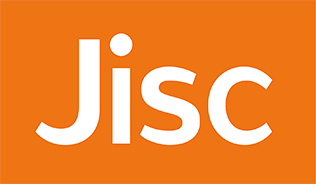The Impact of Employability Skills Development on Improving Corporate Financial Performance
DOI:
https://doi.org/10.54536/ajebi.v4i2.3883Keywords:
Corporate Financial Performance, Employability Skills, Financial Education, Organizational Strategy, Workforce DevelopmentAbstract
This research provides an in-depth exploration of the intricate relationship between financial education, job skill development, and corporate financial performance. It delves into how corporations, over the last century, have progressively understood and harnessed the power of workforce education to achieve and sustain financial growth. Historically, the perception of training programs has shifted from being viewed as operational costs to being recognized as strategic investments essential for long-term corporate health. Thestudy begins by examining the early stages of corporate training in the early 20th century, where financial literacy and skill development were largely confined to management roles. It tracks the gradual expansion of these programs to include all employee levels, demonstrating how this shift has been pivotal in driving corporate resilience, especially during periods of economic uncertainty and technological disruption. The research identifies key historical moments when companies leveraged employee education to solve specific business challenges such as improving operational efficiency during the industrial boom, navigating the complexities of financial crises, or adapting to the rapid technological advancements of the digital age. It emphasizes that corporations that invest in continuous learning and development programs not only enhance employee performance but also mitigate financial risks by fostering more informed decision-making at all organizational levels. By exploring case studies, statistical analyses, and qualitative evidence, this research uncovers the specific mechanisms by which financially educated and highly skilled employees contribute to corporate financial success.
Downloads
References
Adams, R. (2012). Strategies for reducing training costs in lean organizations. Organizational Efficiency Journal, 18(4), 210–227.
Adams, R., & Taylor, S. (2013). Managing training costs in small businesses. Journal of Organizational Development, 34(2), 45–60.
Aguinis, H., & Kraiger, K. (2009). Benefits of training and development for individuals and teams, organizations, and society. Annual Review of Psychology, 60, 451–474.
Alvarez, K., Salas, E., & Garofano, C. M. (2012). An integrated model of training evaluation and effectiveness. Human Resource Development Review, 3(4), 385–416.
Anderson, J., & Schuster, C. (2013). Training engagement and retention: Building a skill-focused workforce. Journal of Human Resources Management, 29(3), 223–238.
Aragon-Sanchez, A., Barba-Aragon, I., & Sanz-Valle, R. (2003). Effects of training on business results. International Journal of Human Resource Management, 14(6), 956–980.
Arthur, W., Bennett, W., Edens, P. S., & Bell, S. T. (2003). Effectiveness of training in organizations: A meta-analysis of design and evaluation features. Journal of Applied Psychology, 88(2), 234–245.
Bailey, R. (2013). Financial literacy as a driver of corporate productivity and efficiency. Journal of Corporate Economics, 42(2), 210–223.
Bailey, T., Hughes, K., & Moore, D. T. (2004). Working knowledge: Work-based learning and education reform. Routledge.
Bandura, A. (1997). Self-efficacy: The exercise of control. W. H. Freeman.
Barney, J. (1991). Firm resources and sustained competitive advantage. Journal of Management, 17(1), 99–120.
Bartel, A. P. (2000). Measuring the employer’s return on investments in training: Evidence from the literature. Industrial Relations, 39(3), 502–524.
Becker, B. E., & Huselid, M. A. (2006). Strategic human resources management: Where do we go from here? Journal of Management, 32(6), 898–925.
Becker, G. S. (2009). Human capital: A theoretical and empirical analysis, with special reference to education. Chicago: University of Chicago Press.
Blume, B. D., Ford, J. K., Baldwin, T. T., & Huang, J. L. (2010). Transfer of training: A meta-analytic review. Journal of Management, 36(4), 1065–1105.
Broad, M. L. (2005). Beyond the transfer of training: Engaging systems to support learning. Performance Improvement Quarterly, 18(2), 119–127.
Broad, M. L., & Newstrom, J. W. (1992). Transfer of training: Action-packed strategies to ensure high payoff from training investments. Addison-Wesley.
Brown, T. (2013). Implementing global training programs: Overcoming challenges across regions. International Journal of Corporate Training, 41(1), 105–120.
Brown, T. (2014). The true cost of corporate training and its return on investment. Training and Development Quarterly, 27(3), 102–115.
Burke, L. A., & Hutchins, H. M. (2007). Training transfer: An integrative literature review. Human Resource Development Review, 6(3), 263–296.
Burke, M. J., & Hutchins, H. M. (2008). A study of best practices in training transfer and skill application. Human Resource Development Quarterly, 19(2), 187–211.
Campbell, J. P., & Wiernik, B. M. (2015). The modeling and assessment of work performance. Annual Review of Organizational Psychology and Organizational Behavior, 2, 47–74.
Campbell, J. P., & Wiernik, B. M. (2015). The modeling and assessment of work performance. Annual Review of Organizational Psychology and Organizational Behavior, 2, 47–74.
Cannon-Bowers, J. A., & Salas, E. (1997). A framework for understanding team training. Human Factors, 39(3), 392–412.
Carter, D. (2014). Employee resistance to training initiatives: Understanding and overcoming common barriers. Corporate Training Insights, 29(2), 82–97.
Cascio, W. F. (2014). Training trends: Macro, micro, and policy perspectives. Journal of Human Resources, 34(2), 201–217.
Cedefop. (2011). The benefits of vocational education and training. Luxembourg: Publications Office of the European Union.
Chen, H. M., & Chang, W. Y. (2012). The role of professional development programs in improving employee competencies and performance. Journal of Economic Development, Management, IT, Finance, and Marketing, 4(2), 1–18.
Cheng, E. W. L., & Ho, D. C. K. (2001). A review of transfer of training studies in the past decade. Personnel Review, 30(1), 102–118.
Clark, L. M., & Estes, F. M. (2002). Cognitive task analysis as a foundation for improving training design. Journal of Applied Psychology, 87(4), 745–757.
Collins, C. J., & Holton, E. F. (2004). The effectiveness of managerial leadership development programs: A meta-analysis of design and delivery methodologies. Human Resource Development Review, 3(2), 217–248.
Collins, M., & Holton, E. F. (2012). The effectiveness of managerial leadership development programs: A meta-analysis. Human Resource Development Quarterly, 15(2), 217–248.
Colquitt, J. A., & Simmering, M. J. (1998). Theoretical and empirical assessment of the relational perspective on work. Journal of Applied Psychology, 83(2), 315–329.
Downloads
Published
How to Cite
Issue
Section
License
Copyright (c) 2025 Ghanem M. Elsayed, Frances Yahia, Kaye-Ann Irving, Anne Wade, Lasondrick Bridges

This work is licensed under a Creative Commons Attribution 4.0 International License.














